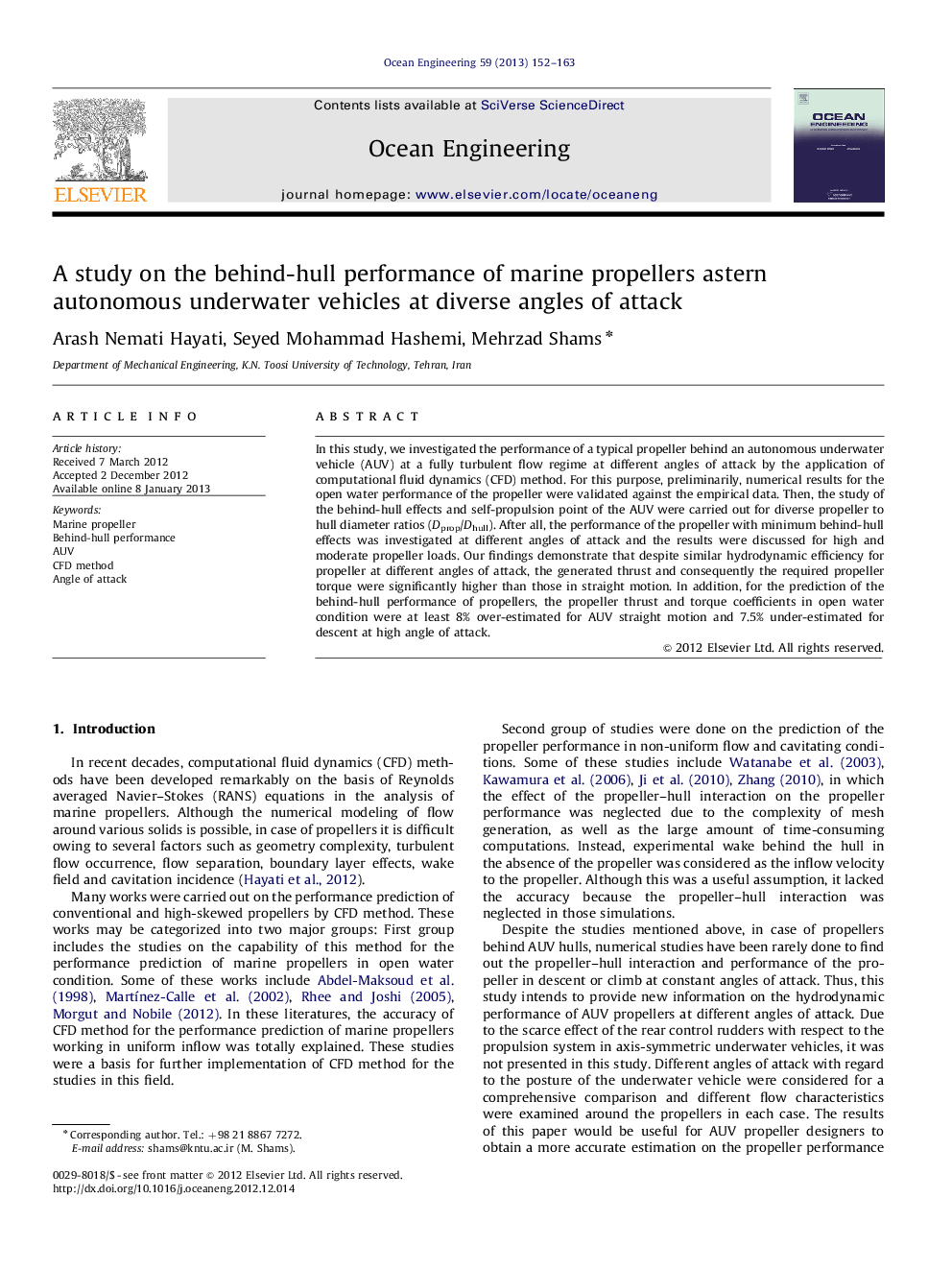| Article ID | Journal | Published Year | Pages | File Type |
|---|---|---|---|---|
| 1726100 | Ocean Engineering | 2013 | 12 Pages |
In this study, we investigated the performance of a typical propeller behind an autonomous underwater vehicle (AUV) at a fully turbulent flow regime at different angles of attack by the application of computational fluid dynamics (CFD) method. For this purpose, preliminarily, numerical results for the open water performance of the propeller were validated against the empirical data. Then, the study of the behind-hull effects and self-propulsion point of the AUV were carried out for diverse propeller to hull diameter ratios (Dprop/Dhull). After all, the performance of the propeller with minimum behind-hull effects was investigated at different angles of attack and the results were discussed for high and moderate propeller loads. Our findings demonstrate that despite similar hydrodynamic efficiency for propeller at different angles of attack, the generated thrust and consequently the required propeller torque were significantly higher than those in straight motion. In addition, for the prediction of the behind-hull performance of propellers, the propeller thrust and torque coefficients in open water condition were at least 8% over-estimated for AUV straight motion and 7.5% under-estimated for descent at high angle of attack.
► We provide new information on the behind-hull performance of AUV propellers. ► AUV propeller designers can estimate the propeller performance more accurately. ► Propeller performance in open water condition is under-estimated for AUV descent.
